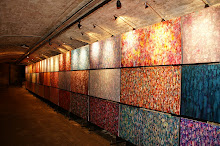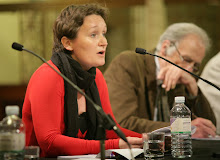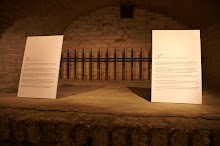It was spring 1300. Your husband had set out early to begin work. You bent over the fire, raking the glowing turf ‘coals’, adding dampened turves to keep it going through the day, crying a little in the acrid-sweet smoke. Hard weeks lay ahead; cutting, transporting and drying the ten thousand turves your farm would need in the coming year.
Your house was near a Bronze Age settlement. The field boundaries and paths you used were the same. Bodmin Moor had been shaped and changed over hundreds of generations, each careless of the impact they might have. The earliest hunter-gatherers burned swathes of the dense oak and hazel woodland to make hunting easier. Bronze Age farmers thrived, creating more than two hundred settlements. Those who came next cut down more and more trees until, by 1300, you had nothing but the turf to use as fuel. But turf seemed inexhaustible. Moor industries relied on it; streamworking, quarrying and clay-working. In 1305 alone, smelting stream tin used 250 tonnes of turf charcoal. Did you ever think it might run out?
All that remains today is an acid grassland able to support a few sheep and ponies. People revere it for its loneliness; thinking its windswept, barren hills one of the last untouched places in Britain.
skip to main |
skip to sidebar







According to the UNFPA the population of the world increases by 1.2% a year.
That's 235,000 a day.
That's 235,000 a day.
GENE MEME is a blog, art installation and outreach programme about world population.
The GENE MEME art installation took place in the Crypt Gallery in London from 9 June to 20 June 2010.
The GENE MEME art installation took place in the Crypt Gallery in London from 9 June to 20 June 2010.
GENE MEME was supported by a debate asking what should be done about rising population.



Links to posts
- Ancestral Pueblo culture
- Angkor
- Antioch
- Bodmin Moor
- Cahokia
- China’s Great Leap Forward
- Classical Greece
- Easter Island
- Ephesus
- Fatehpur Sikri
- GENE MEME
- Hawaii
- Hispaniola
- Holodomor
- Illinois
- Juana Maria
- Kaskaskia
- Madagascar
- Minimata
- North Korea’s ‘Arduous March’
- Pitcairn Island
- Rabbits in Australia
- Rwanda
- Smallpox
- St Kilda
- St Matthew Island
- Sugar
- The Aleuts
- The American Dustbowl
- The ancient Olmec civilisation
- The Aral Sea
- The burial of Riez
- The collapse of the Nasca
- The decline of Bruges
- The deforestation of Ethiopia
- The extinction of the Moa
- The Florida Everglades
- The Gambier trade triangle
- The great civilisation of Sumer
- The Harappan Culture
- The Irish potato famine
- the last Nicoleňo
- The last passenger pigeon
- The Mayan civilisation
- The pleistocene extinctions
- The Sahel
- The Vikings in Greenland
Search This Blog

